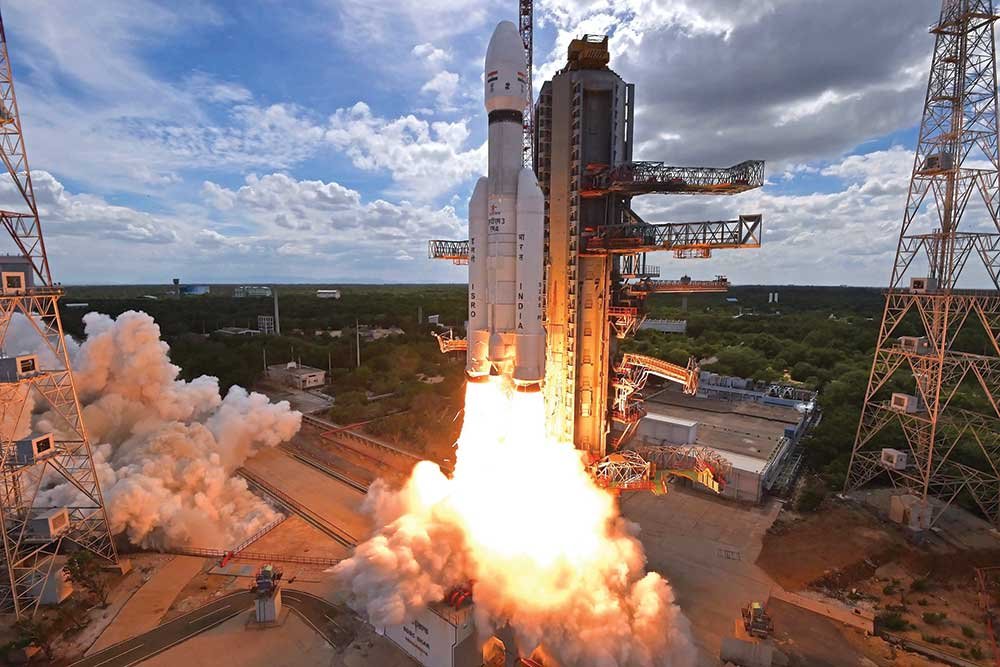RA: The Indian space policy reforms have been commended by many. Kindly elaborate on the impact these reforms have made in the space sector including the role play of private companies.
SRP: India’s space policy reforms, particularly the Indian Space Policy 2023, have revolutionised the country’s space sector by opening it up to private participation. Institutions like IN-SPACe and NSIL have been established to regulate and facilitate private players while commercialising ISRO’s capabilities. This shift has allowed non-governmental entities to design, launch, and operate satellites, as well as offer space-based services. These reforms aim to grow India’s share in the global space economy and enhance its strategic presence in space through increased collaboration, innovation, and commercialisation.
As a result, a new wave of private space companies has emerged, driving innovation in launch vehicles, satellite technology, and Earth observation. With support from ISRO in terms of infrastructure and expertise, these startups are significantly contributing to mission frequency, cost efficiency, and technological advancement. The reforms have not only democratised access to space but have also positioned India as a competitive force in the global space arena, promising long-term economic, technological, and strategic benefits.
RA: Talking of the Indian space sector’s overall potential, how do you visualise its growth trajectory and global competitiveness in the next 5 years? Do you think the entry of foreign satellites into India imposes security concerns?
SRP: India’s space sector is set for rapid expansion over the next five years, driven by private sector participation, cost-effective launches, and global collaborations. Reforms like the Indian Space Policy 2023 and IN-SPACe will unlock opportunities in satellite manufacturing, Earth observation, and space tech startups. With SSLV, reusable rockets, and Gaganyaan, India will strengthen its position in the global launch market, potentially capturing 5-7% of the $1.4 trillion space economy by 2029.
India’s space policy reforms, particularly the Indian Space Policy 2023, have revolutionised the country’s space sector by opening it up to private participation. Institutions like IN-SPACe and NSIL have been established to regulate and facilitate private players while commercialising ISRO’s capabilities
The entry of foreign satellites presents economic benefits but also security risks, including data sovereignty concerns and dual-use tech risks. However, India can mitigate these through strict licensing, data localisation rules, and defence-space coordination. By balancing open-market growth with strategic safeguards, India can emerge as a leading space power without compromising national security.

RA: Ananth Technologies’ association with the Indian space sector has been decades old. What are the key activities your company is currently undertaking? Also, highlight the achievements.
SRP: Ananth Technologies Ltd (ATL) has emerged as a key private player in India’s space sector, supporting ISRO for over three decades in areas such as satellite systems, avionics, and launch vehicle electronics. The company has contributed critical components and subsystems to major Indian missions including Chandrayaan, Mangalyaan, and Gaganyaan. It has also played a significant role in integrating and testing satellites and launch vehicle systems, supplying avionics for over 104 satellites and 84 launch vehicles. In a major milestone, ATL established India’s first private satellite manufacturing and testing facility in Bengaluru, capable of handling complete satellite assembly. Similarly in Thiruvananthapuram for launch vehicle avionics and Assembly, Integration and Testing (AIT) facility.
With India’s space sector opening up to private enterprises, ATL is well-positioned to support both government and commercial missions, including those involving new-age startups and global clients. Its move towards full-fledged satellite manufacturing marks a shift from being a subsystem supplier to becoming a comprehensive aerospace solutions provider. By bridging public and private capabilities, ATL not only strengthens India’s space supply chain but also enhances the country’s competitiveness in the global space economy, in making satellites for the LEO & GEO orbits and launch vehicles.
RA: India’s contribution to the global space economy hovers around 2 per cent, according to reports. How can India enhance its share globally while focusing and capitalising on the domestic space economy?
SRP: To strengthen its position in the global space economy, India should transition from a service-based approach to an innovation-led ecosystem. This shift requires focused investment in high-impact R&D domains such as AI-powered satellite analytics, next-generation propulsion systems, satellite networks, and deep-space exploration.
Domestically, satellite-enabled applications — spanning precision agriculture, infrastructure, disaster response, 5G connectivity, IoT, etc. present immense untapped opportunities. By fostering a robust ecosystem with enhanced funding, simplified regulations, and incentives for domestic manufacturing, India can emerge as a key production hub and a launch pad for future space innovators worldwide.
ATL has moved from being a subsystem supplier to becoming a comprehensive aerospace solutions provider. By bridging public and private capabilities, ATL strengthens India’s space supply chain and enhances competitiveness in the global space economy, in making satellites for the LEO & GEO orbits and launch vehicles
RA: In the last few years, the Indian space sector has witnessed entry and vibrant participation of startups including the government’s involvement in accelerating collaborative partnership in space technology. Will this renewed momentum help the Indian space ecosystem mature faster and position it as a lead innovator, and technology disruptor in the long run?
SRP: The rise of space startups, backed by ISRO and IN-SPACe, has injected fresh momentum into India’s space sector, driving innovation across launch systems, propulsion, satellite tech, and data analytics. By fostering collaborative R&D, expanding access to testing infrastructure, and creating procurement opportunities, India can accelerate its space capabilities far beyond the pace of traditional models.
This growing ecosystem positions India not just as a spacefaring nation, but as a future leader in space technology — developing, owning, and exporting cutting-edge solutions to the world.

Key Improvements:
- Stronger Opening: “Injected fresh momentum” is more vivid than “brought new energy.”
- Sharper Focus: Streamlined the examples of innovation for better readability.
- Future-Oriented Conclusion: “Technology originator and exporter” is rephrased as “developing, owning, and exporting cutting-edge solutions” for greater impact.
India should transition from a service-based approach to an innovation-led ecosystem to strengthen its position in the global space economy. This shift requires focused investment in high-impact R&D domains such as AI-powered satellite analytics, next-generation propulsion systems, satellite networks, and deep-space exploration
RA: You have been leading the space industry association SIA-India and organising DEFSAT conference and expo. How has been your experience so far and what major milestones have been achieved while bringing the defence space technology to the centre stage? Also provide insights into the SIA-India’s contribution.
SRP: As an active member and leader in SIA-India, our goal has been to unify the voices of stakeholders across academia, startups, industry, and government. Through initiatives like DEFSAT, we’ve successfully brought space-based defence technologies to the strategic forefront, encouraging dialogue between policymakers, defence services, and private industry. DEFSAT 2023 and 2024 witnessed significant MoUs, policy announcements, and international collaborations, and served as platforms to showcase India’s readiness to lead in space-based ISR, surveillance, and secure communications. SIA-India’s continuous engagement with IN-SPACe, NSIL, and MoD is helping to shape a more inclusive and forward-looking policy framework.
RA: Ananth Technologies has been a regular exhibitor at Aero India. Kindly share your experience at Aero India 2025 and its contribution to your company’s growth journey.
SRP: Aero India 2025 has been another landmark event for Ananth Technologies, reinforcing our commitment to the aerospace and defence sectors. Our participation this year focused on showcasing our capabilities in mission-critical subsystems, high-reliability electronics, and defence-space integration. The event provided an excellent platform for engaging with domestic and international partners, exploring new markets, and demonstrating how our products are aligned with India’s Aatmanirbhar Bharat and ‘Make in India’ goals. The strong interest from global OEMs and policy stakeholders affirms our position as a trusted partner in India’s defence and space growth story.





